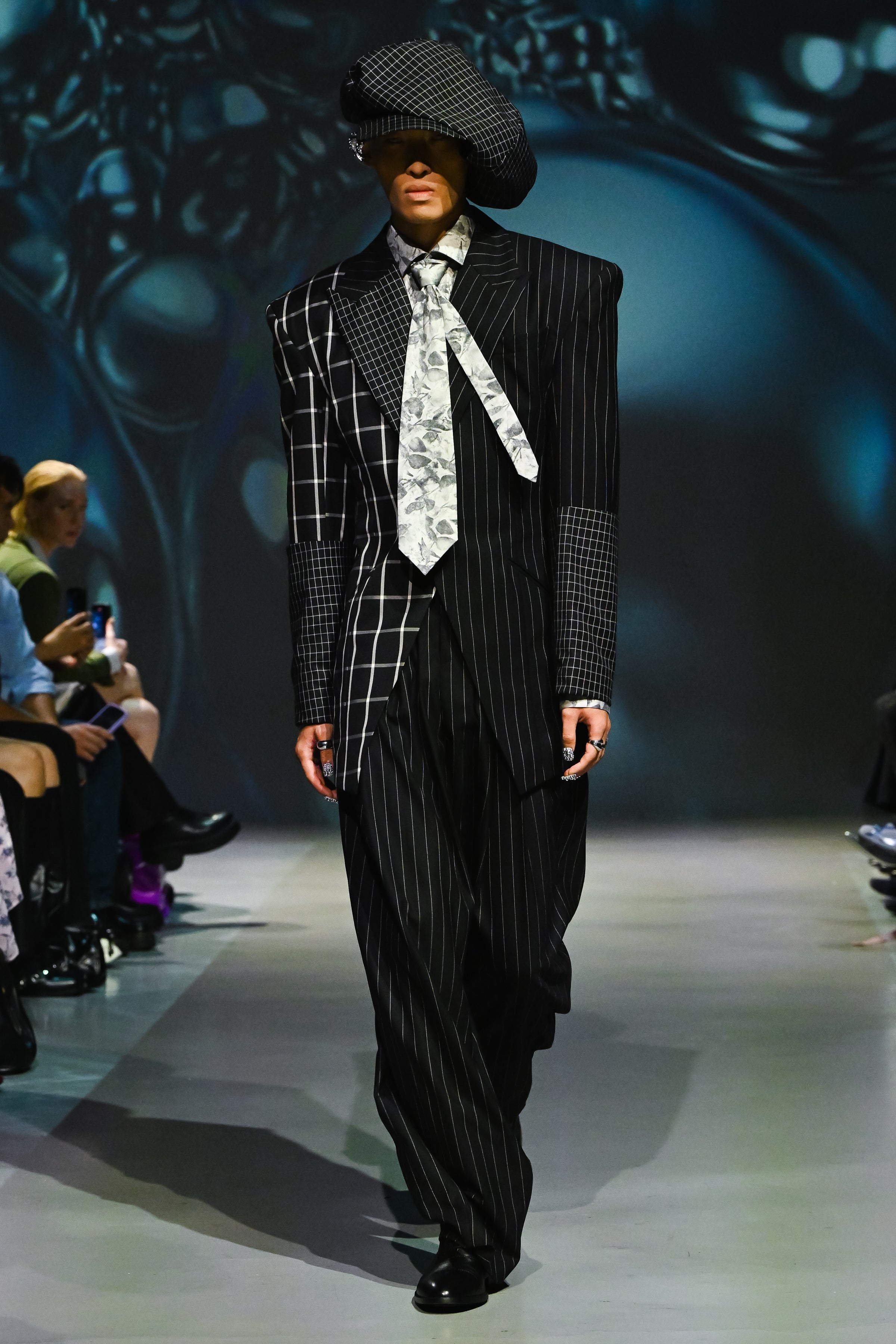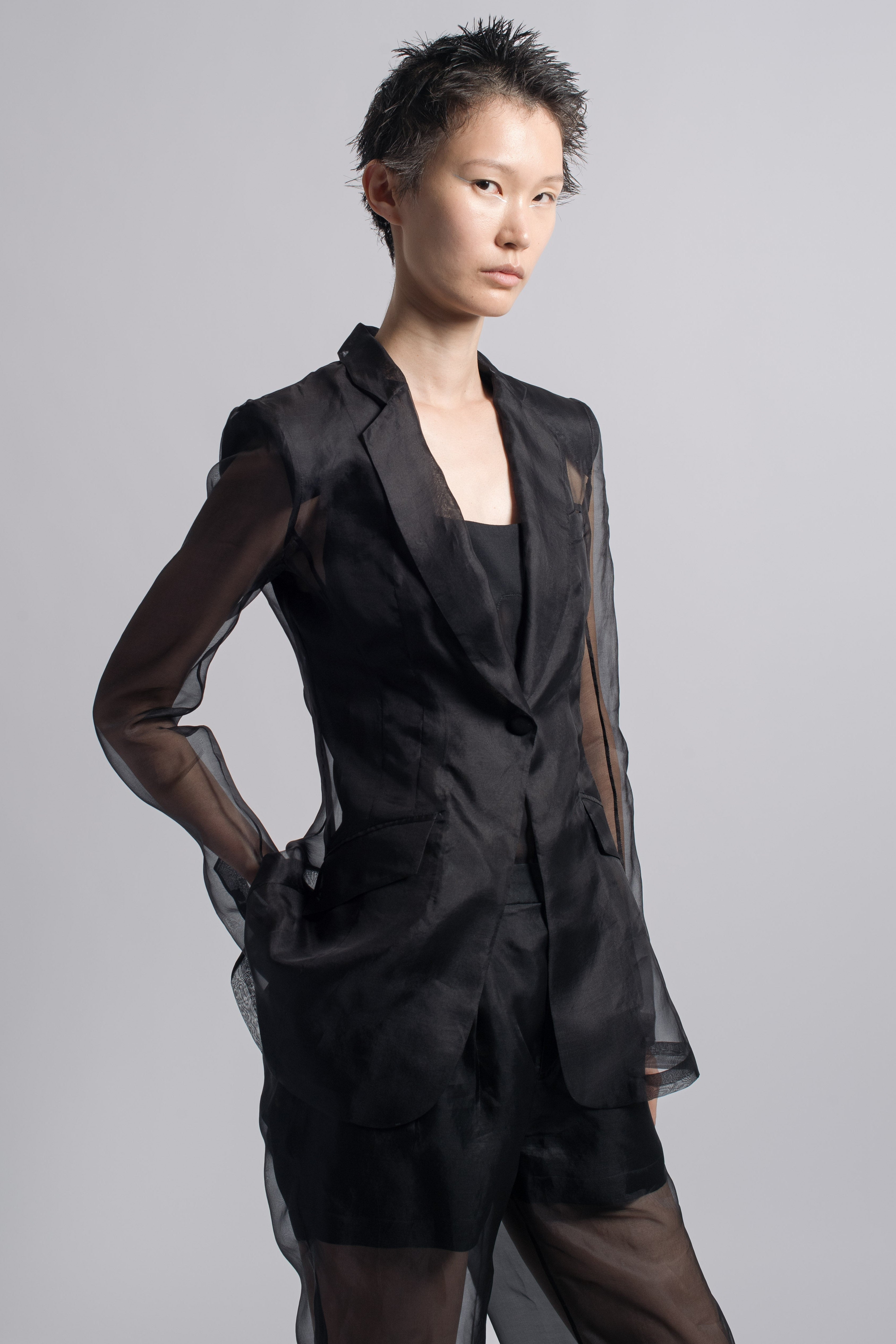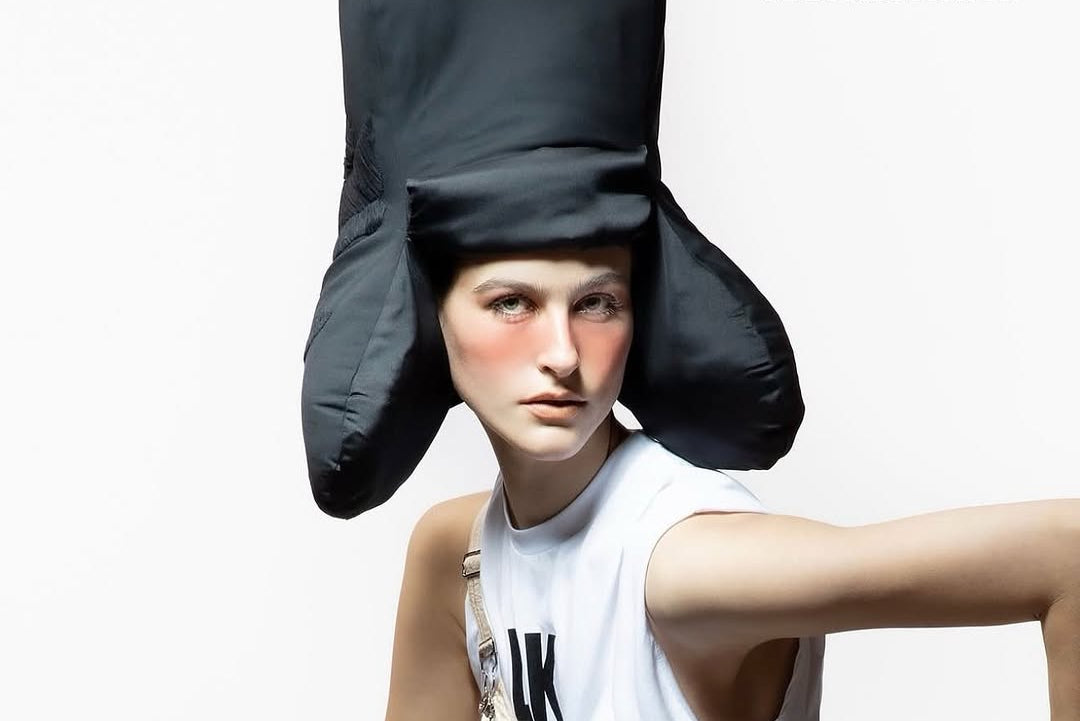When Jackey Zhou—singer, actor, and increasingly visible style presence—showed up in Kind Magazine wearing SHAO's Class of '98 collection charcoal denim trousers, it wasn't just another celebrity styling moment. It was evidence of something larger percolating in the intersection of Pan-Asian entertainment, editorial fashion, and what constitutes legitimate menswear craftsmanship in 2025.
Zhou's appearance signals the migration of culturally coded, technically rigorous garments from niche designer wardrobes into broader fashion consciousness. The Class of '98 collection represents design thinking that operates through silhouette, fabrication choices, and subtle detailing rather than aggressive branding or obvious trend signaling.
 Pan-Asian Visibility and Fashion's Shifting Geography
Pan-Asian Visibility and Fashion's Shifting Geography
Zhou's appearance in SHAO speaks to larger patterns in fashion's cultural geography. The Pan-Asian entertainment industry represents one of the most significant shifts in global fashion influence over the past decade. This isn't about new markets—it's about the cultural production of style itself becoming more distributed.
When a Taiwanese singer-actor wears a Chinese-American designer's work editorially, the cultural exchange is sophisticated. It's evidence of cross-pollinating style ecosystems where influence flows in multiple directions. Zhou's position—navigating Mandopop stardom while maintaining acting credibility—mirrors the cultural synthesis that SHAO's design philosophy embodies.
The choice of SHAO represents design language that resonates with Zhou's positioning: technically accomplished, culturally fluent, refusing easy categorization. These garments operate comfortably across categories without subordinating themselves to any single aesthetic tribe.
 Tailoring That Doesn't Telegraph Its Intelligence
Tailoring That Doesn't Telegraph Its Intelligence
The specific choice of trousers reveals sophisticated styling thinking. Trousers are menswear's unsung heroes—doing enormous heavy lifting in silhouette construction while rarely receiving attention. Good trousers are like good rhythm sections: when they're working properly, you don't notice them consciously.
SHAO's approach demonstrates understanding of this principle. The Class of '98 charcoal denim trousers possess technical precision that photographs well—clean lines, considered proportions, fabric weight that reads clearly—without obvious design gestures that announce themselves as Fashion with a capital F.
This balance between editorial impact and wearable reality represents contemporary fashion's central tension. SHAO's work occupies productive middle ground: garments with clear points of view that don't sacrifice practical utility.
Late-'90s Nostalgia and Contemporary Design
The Class of '98 collection name invites consideration of how contemporary fashion engages with its recent past. The late '90s occupy peculiar zone—recent enough for direct experience, distant enough for active reinterpretation rather than costume.
SHAO's engagement with this period isn't nostalgia recycling. The Class of '98 reference functions as cultural shorthand. These trousers don't recreate specific '90s garments—they extract principles from that era's design thinking and translate them into contemporary contexts.
This approach demonstrates mature design thinking. Experienced designers extract principles rather than replicate surfaces. SHAO's Class of '98 collection understands what made late-'90s urban fashion compelling and translates those insights into garments that function in 2025.
 Technical Precision as Cultural Statement
Technical Precision as Cultural Statement
The specific choice of charcoal denim carries technical implications. Denim's ubiquity can obscure how technically demanding it is to work with properly. Charcoal denim adds complexity—achieving consistent color depth, preventing excessive fading, maintaining fabric hand demands expertise beyond basic construction.
SHAO's facility with denim fabrication reflects broader expertise in material manipulation. The Class of '98 trousers demonstrate understanding of how fabric choice impacts silhouette—specific weight allows clean lines without excessive structure, natural drape without slouchiness.
Contemporary menswear tailoring has evolved significantly, incorporating insights from athletic wear, workwear, and streetwear while maintaining formal tailoring precision. SHAO's work demonstrates fluency in these contemporary tailoring languages.
The Larger Pattern
Jackey Zhou’s editorial in KIND Magazine, wearing SHAO’s Class of ’98 charcoal denim trousers, signifies more than a celebrity endorsement—it captures the shifting geography of style influence. When a Mandopop artist embraces culturally coded tailoring, it reflects fashion’s movement toward synthesis rather than hierarchy, where street energy and editorial sophistication merge.
SHAO’s design—rooted in late-’90s nostalgia and technical denim craft—embodies this hybrid language. It refuses confinement to Western or Eastern paradigms, instead translating between them with precision and intent. Zhou’s appearance doesn’t just showcase a look; it reinforces SHAO’s thesis that the future of menswear belongs to designers who navigate multiple aesthetic codes fluently, understanding that craftsmanship and cultural literacy are not opposites but shared foundations of modern design.
EXPORE CLASS OF'98 Collection







